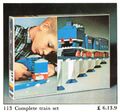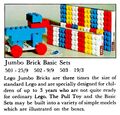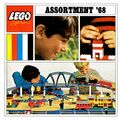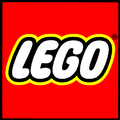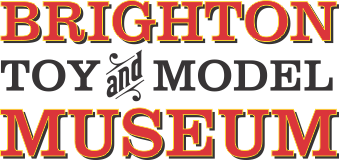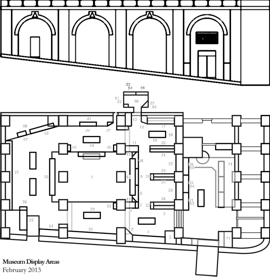Category:Lego System: Difference between revisions
BTMM Gillian (talk | contribs) No edit summary |
BTMM Gillian (talk | contribs) No edit summary |
||
| Line 20: | Line 20: | ||
==References== | ==References== | ||
Phil Ament [http://www.ideafinder.com/history/inventions/lego.htm "Lego History - Invention of Lego"] | *Phil Ament [http://www.ideafinder.com/history/inventions/lego.htm "Lego History - Invention of Lego"] | ||
*[http://parents.lego.com/en-gb/LEGOAndSociety/50th%20Birthday.aspx "50th Birthday of the Lego Brick] | |||
{{links}} | {{links}} | ||
Revision as of 12:18, 26 January 2012
Lego is a classic "plastic building blocks" toy that originated from Scandinavia.
In 1932, Ole Kirk Christiansen, a carpenter, set up a business in the village of Billund, Denmark, which manufactured wooden toys. The company took up the name LEGO in 1934, which is taken from the Danish words “Leg godt” meaning “play well”. In 1942, the LEGO factory was destroyed in a fire. However, despite this, the Christiansens quickly resumed production of wooden toys. In 1947 the LEGO company was the first in Denmark to buy a plastic injection-molding machine for making toys, and in 1949, the company produced approximately 200 different plastic and wooden toys. These included Automatic Binding Bricks, on which the LEGO bricks we know today are based.
LEGO was introduced in the United States in 1962, and at the time LEGOs came in loose sets of bricks. However, by 1966, building sets for trucks, planes and ships were being produced, and in 1969, the LEGO Group added the Lego Duplo line of big bricks for the very young, followed by the Lego Technic line of more sophisticated projects for older children in 1977, which included gears and driveshaft pieces. Building on the Technic line, the Lego Mindstorm series of kits were introduced later, containing software and hardware to create small, customizable and programmable robots. LEGO products first arrived in the United States during the Cold War, a period which saw a heightened interest in educational toys. During this period, U.S. leaders encouraged schools to start turning out scientists and mathematicians, who were considered as being of great importance in the arms and space races with the Soviet Union. LEGO promised that its products would "develop the child's critical judgment, manual dexterity, and ability to think for himself."
Lego pieces typically have round raised peglike protrusions in the upper face and a hollow underside, and can be clipped together in stacks, or staggered to make walls and other more complex shapes such as vehicles. In spite of the small changes in shape, colour and design throughout the years, today’s LEGO bricks still fit bricks from 1958. As well as producing custom pieces such as wheels, as roof components, and trees and people, Lego have produced a number of specialised packs with custom parts that allow more specialised types of model, and have produced several "themed" series (Space, Pirates, and so on). They've also produced a number of highly successful ranges designed to tie in with existing franchises, notably their "Star Wars" range.
Lego in the Museum
Lego is not well-represented in the Museum. Although we love Lego,
- there have been vast numbers of different Lego sets produced over the years
- most of the main Lego pieces are still currently available and don't particularly need curating in museums
- there is already an official network of existing theme parks for enthusiasts, totally devoted to Lego (Legoland), and
- One of the UK's seven dedicated Lego Stores (complete with large display models) happens to be only about five minutes' walk away from the Museum, by the bottom of Queens Road.
Brighton's Lego shop
To get to the Brighton Lego Store, walk directly away from the front of Brighton Station, down Queens Road, until you get to the Clock Tower. The Churchill Square Shopping Centre will be the large modern complex over to your right. The Lego Store is set into the front of the building.
References
External links
| Toy Brands and Manufacturers |
|---|
Lego System |
Subcategories
This category has the following 27 subcategories, out of 27 total.
*
A
- Automatic Binding Bricks - Lego Mursten (Lego) (1 P, 5 F)
D
- Duplo (4 F)
E
- Early Lego sets (5 P, 12 F)
H
L
- Lego 4.5v - 12V Train System (17 F)
- Lego accessory packs (10 P, 35 F)
- Lego Architecture (11 F)
- Lego Creator (2 F)
- Lego Digital Designer (LDD) (1 P, 6 F)
- Lego Homemaker (9 P, 16 F)
- Lego Maxifigures (5 P, 11 F)
- Lego Microfigures (1 P, 2 F)
- Lego System by Samsonite (6 F)
- Lego Technic (1 P, 6 F)
- Lego wheels (3 P, 5 F)
- Lego windows and doors (1 P, 4 F)
- Legoland (theme park) (empty)
- Legoland figures (2 P, 3 F)
M
- Modern Lego Bricks (Lego) (empty)
R
- Lego roof bricks (1 P, 7 F)
Pages in category ‘Lego System’
The following 45 pages are in this category, out of 45 total.
B
F
L
N
Media in category ‘Lego System’
The following 190 files are in this category, out of 190 total.
- Aeroplane and Pilot, retail box (Lego 250).jpg 2,000 × 1,221; 220 KB
- Aeroplane, retail box (Lego 609).jpg 2,000 × 1,450; 255 KB
- American Embassy, Copenhagen, Lego model (LegoIB1 ~1962).jpg 2,654 × 2,388; 1.29 MB
- Angle and Valley Corner Tiles, Lego Set 283 (LegoCat ~1960).jpg 689 × 952; 67 KB
- Balcombe Viaduct (Ouse Valley Viaduct), Lego Digital Designer.jpg 995 × 560; 99 KB
- Base Plates, Lego Set 227 (LegoCat ~1960).jpg 689 × 952; 96 KB
- Base Plates, Lego Set 228 (LegoCat ~1960).jpg 689 × 952; 87 KB
- Base Plates, Lego Set 229 (LegoCat ~1960).jpg 689 × 952; 94 KB
- Battery Case, Lego 101 (LegoAss 1968).jpg 1,498 × 669; 166 KB
- Bevelled Bricks, Lego Set 280 (LegoCat ~1960).jpg 689 × 952; 56 KB
- Bevelled Bricks, Lego Set 281 (LegoCat ~1960).jpg 689 × 952; 70 KB
- Bevelled Bricks, Lego Set 282 (LegoCat ~1960).jpg 689 × 952; 65 KB
- Billinton E2 0-6-0 tank locomotive, Lego Digital Designer.jpg 598 × 449; 67 KB
- Breakdown Lorry, Lego 256 (LegoCat ~1960).jpg 689 × 476; 48 KB
- Brighton Toy and Model Museum (Lego model).jpg 1,024 × 512; 67 KB
- Brighton Toy and Model Museum rendered in Lego (LDD).jpg 1,280 × 998; 289 KB
- Build a Real Railway, Lego (LPWLego 1971).jpg 2,446 × 2,600; 1.77 MB
- Building Instructions, Lego (LegoCat ~1960).jpg 2,500 × 1,683; 324 KB
- Chain Pier, Brighton, Lego Digital Designer.jpg 819 × 459; 92 KB
- Church Special Box, Lego Set 309 (LegoCat ~1960).jpg 689 × 952; 75 KB
- Church, Lego model (LegoIB1 ~1962).jpg 1,945 × 2,379; 837 KB
- Complete Train Set, Lego 113 (LegoAss 1968).jpg 1,511 × 1,414; 361 KB
- Corner Bricks, Lego Set 217 (LegoCat ~1960).jpg 689 × 952; 67 KB
- Curved Bricks, Lego Set 224 (LegoCat ~1960).jpg 689 × 952; 59 KB
- Cyclists and Motorcyclists, Lego Set 270 (LegoCat ~1960).jpg 689 × 476; 62 KB
- De Bijenkorf, Holland (LegoIB1 ~1962).jpg 2,310 × 2,355; 951 KB
- Did you like. Lego Saturn V (Lego 92176).jpg 1,592 × 2,000; 555 KB
- Dolls Furniture for Girls (LPWLego 1971).jpg 1,392 × 3,000; 1.05 MB
- Dolls Furniture for Girls 260 261 (LegoCollGuide 1971).jpg 2,600 × 2,062; 1.19 MB
- Double Garage Special Box, Lego Set 306 (LegoCat ~1960).jpg 689 × 952; 84 KB
- E-Type Jaguar in Garage, Lego 670 (Lego ~1964).jpg 702 × 488; 68 KB
- Eight-Stud Bricks, Lego Set 218 (LegoCat ~1960).jpg 689 × 952; 67 KB
- Electronic control (LegoAss 1968).jpg 1,600 × 1,202; 343 KB
- Empire State Building, Lego model (LegoIB1 ~1962).jpg 2,423 × 3,000; 1.66 MB
- ESSO Lorry, Lego 251 (LegoCat ~1960).jpg 689 × 476; 44 KB
- Esso Petrol Pumps and Sign, Lego Set 231 (Lego ~1964).jpg 702 × 488; 53 KB
- ESSO Petrol Pumps, Lego Set 231 (LegoCat ~1960).jpg 689 × 476; 59 KB
- ESSO Tanker, Lego 250 (LegoCat ~1960).jpg 689 × 476; 51 KB
- ESSO Trailer, Lego 252 (LegoCat ~1960).jpg 689 × 476; 36 KB
- Family, retail box (Lego 254).jpg 2,000 × 1,170; 224 KB
- Fifty Lettered Bricks, Lego Set 234 (LegoCat ~1960).jpg 689 × 952; 65 KB
- Fifty Numbered Bricks, Lego Set 237 (LegoCat ~1960).jpg 689 × 952; 67 KB
- Fire Engine with Ladder, Lego 255 (LegoCat ~1960).jpg 689 × 476; 61 KB
- Fire Station Special Box, Lego Set 308 (LegoCat ~1960).jpg 689 × 952; 86 KB
- Flags Trees and Road Signs (Lego 939).jpg 2,000 × 1,279; 215 KB
- Ford Taunus in Garage, Lego 263 (Lego ~1964).jpg 702 × 488; 64 KB
- Four-Stud Bricks, Lego Set 220 (LegoCat ~1960).jpg 689 × 952; 59 KB
- Full Speed Ahead with Lego 4-5V Train (LPWLego 1971).jpg 2,600 × 1,839; 1.81 MB
- Garage Base with Automatic Door, Lego Set 235 (LegoCat ~1960).jpg 689 × 952; 86 KB
- Garage with Automatic Door, Lego Set 236 (LegoCat ~1960).jpg 689 × 952; 77 KB
- House with Garage, Lego PlanPack 324 (LegoAss 1968).jpg 1,534 × 708; 188 KB
- I360 (Lego Digital Designer).jpg 786 × 772; 54 KB
- Ideas Book (LegoAss 1968).jpg 1,543 × 702; 148 KB
- Illuminating Brick, Lego Set 245 (LegoCat ~1960).jpg 689 × 952; 67 KB
- International Flags, Lego Set 242 (LegoCat ~1960).jpg 689 × 952; 55 KB
- James Mays Toy Stories, cover and spine (ISBN 9781844861071).jpg 1,451 × 1,600; 1.39 MB
- Jeep, Lego PlanPack 330 (LegoAss 1968).jpg 1,543 × 776; 187 KB
- Jumbo Bricks, Basic Sets, Lego 501 502 503 (LegoAss 1968).jpg 1,534 × 1,467; 363 KB
- Karmann Ghia in Garage, Lego 265 (Lego ~1964).jpg 702 × 488; 62 KB
- Kiddicraft and Lego bricks.jpg 675 × 500; 49 KB
- Kiddicraft brick (green) and Lego Mursten brick (yellow).jpg 1,600 × 1,548; 147 KB
- Kindergarden, Lego model (LegoIB1 ~1962).jpg 2,000 × 1,669; 655 KB
- Kitchen set, box sleeve (Lego 263).jpg 2,200 × 1,473; 1.07 MB
- Kitchen set, interior box (Lego 263).jpg 2,200 × 1,468; 525 KB
- La Prevoyance Social, Belgium, Lego model (LegoIB1 ~1962).jpg 1,879 × 2,350; 714 KB
- Large Base Plate, Lego 700 E (LegoCat ~1960).jpg 1,378 × 952; 134 KB
- Large Wheels, Lego Set 401 (Lego ~1964).jpg 702 × 976; 87 KB
- Large-Size Lego Blocks, Samsonite (Schwarz 1967).jpg 2,739 × 1,247; 459 KB
- Lego 2x2 Brick.jpg 1,602 × 1,601; 143 KB
- Lego 2x4 Brick, top view.jpg 1,600 × 800; 88 KB
- Lego Accessories pack sleeve, Architect (Lego 1958).jpg 2,029 × 2,015; 648 KB
- Lego Accessories Pack Sleeve, bricks (Lego, 1958).jpg 2,036 × 2,019; 536 KB
- Lego and Lego Technic, brick profiles, evolution.jpg 1,062 × 629; 125 KB
- Lego Assortment 68, catalogue cover (Lego 1968).jpg 1,595 × 1,600; 518 KB
- Lego Basic Sets (LegoCat ~1960).jpg 1,600 × 1,069; 221 KB
- Lego Bioncle, jointed skeleton (Patent US D696361 2011).jpg 2,000 × 1,541; 259 KB
- Lego Bionicle (Patent US 2013324002 2011).jpg 2,000 × 1,153; 244 KB
- Lego Building Instructions (Lego ~1964).jpg 2,000 × 1,349; 296 KB
- Lego by Land, Trains (LegoIB1 ~1962).jpg 2,600 × 1,722; 1.27 MB
- Lego by Land, trains (LIB2 1962).jpg 2,600 × 1,688; 1.52 MB
- Lego Complete Town Plan Set, Lego 810 (Lego 1968).jpg 1,480 × 1,375; 423 KB
- Lego Creator 4939 Sports Car.jpg 1,024 × 768; 300 KB
- Lego Creator logo.jpg 923 × 203; 31 KB
- Lego Duplo (LegoCollGuide 1971).jpg 3,000 × 1,298; 949 KB
- Lego Duplo (Patent DE 1678326 1968).jpg 1,971 × 1,424; 237 KB
- Lego Duplo 510 512 513 (LPWLego 1971).jpg 3,000 × 1,381; 756 KB
- Lego Duplo interoperability (LPWLego 1971).jpg 1,000 × 1,000; 90 KB
- Lego flexible coupler (Patent CA 702336 A 1965.jpg 2,000 × 1,578; 206 KB
- Lego Halloween Spider (2012).jpg 1,024 × 768; 495 KB
- Lego Homemaker figure, head (1974).jpg 700 × 800; 60 KB
- Lego Homemaker figure, head (Patent US 3982353 1975).jpg 2,000 × 1,252; 156 KB
- Lego Homemaker figure, parts (Patent US 4028844 1975).jpg 2,000 × 1,660; 183 KB
- Lego Homemaker Figures (1974).jpg 2,200 × 2,196; 324 KB
- Lego Homemaker Kitchen, built.jpg 2,200 × 1,239; 263 KB
- Lego Kitchen 263, cover (LegoManual 263).jpg 2,000 × 1,992; 819 KB
- Lego Kitchen 263, figure 5 (LegoManual 263).jpg 2,000 × 1,737; 527 KB
- Lego Kitchen 263, full diagram (LegoManual 263).jpg 3,006 × 2,545; 1.64 MB
- Lego Kitchen 263, Homemaker figures (LegoManual 263).jpg 1,540 × 2,000; 350 KB
- Lego Mechanical Sets, Samsonite (Schwarz 1967).jpg 2,000 × 1,495; 481 KB
- Lego Microfigure (Patent US D611108 2008).jpg 1,322 × 2,000; 246 KB
- Lego Minifigure (Patent US 4205482 1977).jpg 1,847 × 2,000; 356 KB
- Lego Mursten aeroplane, end-slots (Lego ~1953).jpg 1,862 × 1,426; 1.36 MB
- Lego Mursten logo (~1953).jpg 2,000 × 751; 452 KB
- Lego Mursten Set (Lego ~1953).jpg 2,000 × 1,435; 521 KB
- Lego Mursten slotted brick, underside, branded (Lego ~1953).jpg 1,600 × 1,047; 265 KB
- Lego roof bricks (Lego, 1960s).jpg 2,500 × 2,500; 289 KB
- Lego Roof Bricks, lineart (Patent 3034254, 1959-1962).jpg 1,159 × 881; 215 KB
- Lego Second Generation bricks (Lego).jpg 1,515 × 1,600; 194 KB
- Lego Sets (Lego ~1964).jpg 1,600 × 1,089; 230 KB
- Lego Store, Brighton BN1 2TF.jpg 2,200 × 1,239; 1.42 MB
- Lego System (LegoCat ~1960).jpg 2,099 × 1,882; 586 KB
- Lego System by Samsonite, logo (1960s).jpg 793 × 521; 90 KB
- Lego System logo (1968).jpg 1,507 × 772; 88 KB
- Lego System range, Samsonite (Schwarz 1962).jpg 2,200 × 1,458; 549 KB
- Lego System single-sheet catalogue (LegoCat ~1960).jpg 2,500 × 1,264; 618 KB
- Lego System single-sheet catalogue (LegoCat ~1964).jpg 1,600 × 813; 329 KB
- Lego Technic beams.jpg 1,024 × 575; 310 KB
- Lego Technic helicopter 42020.jpg 1,024 × 768; 378 KB
- Lego Technic Helicopters 42020.jpg 1,024 × 766; 95 KB
- Lego Technic Logo.jpg 2,330 × 410; 81 KB
- Lego Technic pegs.jpg 1,024 × 767; 481 KB
- Lego Town Plan Board, Lego 200 (LegoCat ~1960).jpg 699 × 1,162; 132 KB
- Lego Town Plan Set, Samsonite (Schwarz 1962).jpg 1,993 × 1,641; 302 KB
- Lego trademarked logo.png 713 × 715; 39 KB
- Lego Train Accessories 150-156 (LegoAss 1968).jpg 3,000 × 1,500; 449 KB
- Lego train tracks (Patent US 3464624 1966).jpg 2,000 × 1,736; 360 KB
- Lego wheel and axle design (Patent 3234683, s1962).jpg 508 × 795; 87 KB
- Lego wheels and axles (Lego, 1960s).jpg 3,000 × 2,294; 398 KB
- Lego windows and doors (Lego, 1960s).jpg 3,000 × 2,504; 464 KB
- Lego windows, lineart (Patent 3284946, 1964-1966).jpg 1,056 × 798; 144 KB
- Legoland Figures and Microwheels, box art (Lego 1975).jpg 3,000 × 812; 280 KB
- Legoland logo (1975).jpg 2,000 × 537; 61 KB
- Little House, Lego Set 211 (LegoCat ~1960).jpg 689 × 476; 54 KB
- Little House, Lego Set 212 (LegoCat ~1960).jpg 689 × 476; 51 KB
- Little House, Lego Set 213 (LegoCat ~1960).jpg 689 × 476; 50 KB
- Little Shop, Lego Set 210 (LegoCat ~1960).jpg 689 × 476; 51 KB
- Locomotive with Motor, Lego 112 (LegoAss 1968).jpg 1,496 × 673; 162 KB
- London Bus, Lego PlanPack 313 (LegoAss 1968).jpg 1,534 × 698; 164 KB
- Mercedes 190SL in Garage, Lego 266 (Lego ~1964).jpg 702 × 488; 64 KB
- Mercedes-Benz in Garage, Lego 264 (Lego ~1964).jpg 702 × 488; 68 KB
- Motor with Three Sets of Wheels, Lego 100 (LegoAss 1968).jpg 1,490 × 678; 177 KB
- Mr and Mrs Stud (LPWLego 1971).jpg 1,435 × 1,600; 452 KB
- NASA Astronaut Microfigure (Lego 90398pb008).jpg 1,200 × 1,146; 148 KB
- No Limit With Lego, Samsonite (Schwarz 1967).jpg 2,000 × 1,985; 650 KB
- Opel Rekord in Garage, Lego 262 (Lego ~1964).jpg 702 × 488; 64 KB
- Petrol Station Special Box, Lego Set 310 (LegoCat ~1960).jpg 689 × 952; 89 KB
- Plan Your Dream House in Lego, 01 (LegoIB1 ~1962).jpg 2,000 × 1,313; 718 KB
- Plan Your Dream House in Lego, 02 (LegoIB1 ~1962).jpg 2,000 × 1,317; 608 KB
- Police Officers and Motorcycle, retail box (Lego 256).jpg 2,000 × 1,298; 218 KB
- Police Patrol, retail pack (Lego 659).jpg 2,000 × 1,126; 263 KB
- Removal Van, Lego 257 (LegoCat ~1960).jpg 689 × 476; 48 KB
- Road Signs, Lego Set 232 (Lego ~1964).jpg 702 × 488; 46 KB
- Road Signs, Lego Set 232 (LegoCat ~1960).jpg 689 × 476; 54 KB
- SAS Building, Copenhagen, Lego model (LegoIB1 ~1962).jpg 2,481 × 2,366; 1.04 MB
- Saturn V Building Instructions (Lego 92176).jpg 1,589 × 2,000; 803 KB
- Seven Beams with Names, Lego Set 226 (LegoCat ~1960).jpg 689 × 952; 62 KB
- Shell Garage, Lego PlanPack 325 (LegoAss 1968).jpg 1,543 × 697; 195 KB
- Single-Stud Bricks, Lego Set 222 (LegoCat ~1960).jpg 689 × 952; 64 KB
- Single-Stud Bricks, Round, Lego Set 223 (LegoCat ~1960).jpg 689 × 952; 64 KB
- Six-Stud and Eight-Stud Beams, Lego Set 225 (LegoCat ~1960).jpg 689 × 952; 71 KB
- Six-Stud Bricks, Lego Set 219 (LegoCat ~1960).jpg 689 × 952; 67 KB
- Sixteen-Stud Beams, Lego Set 225 (LegoCat ~1960).jpg 689 × 952; 69 KB
- Small Train with Motor, Lego 115 (LegoAss 1968).jpg 1,486 × 1,404; 362 KB
- Small Train Without Motor, Lego 111 (LegoAss 1968).jpg 1,502 × 683; 183 KB
- Small Wheels, Lego Set 400 (Lego ~1964).jpg 702 × 976; 70 KB
- Street Lamps, Lego Set 233 (Lego ~1964).jpg 702 × 488; 37 KB
- Street Lamps, Lego Set 233 (LegoCat ~1960).jpg 689 × 476; 42 KB
- Sud Aviation Caravelle airliner set (Legoland 687).jpg 1,600 × 784; 195 KB
- Super Train Set, Lego 119 (LegoAss 1968).jpg 2,992 × 1,540; 903 KB
- Taxi Station, retail box (Lego 368).jpg 2,000 × 1,106; 223 KB
- Taxi, Lego PlanPack 315 (LegoAss 1968).jpg 1,543 × 695; 197 KB
- Tipper Lorry, retail box (Lego 662).jpg 2,000 × 1,126; 182 KB
- Tipper Truck, Lego 253 (LegoCat ~1960).jpg 689 × 476; 46 KB
- Tower Block building (LegoIB1 ~1962).jpg 2,427 × 3,000; 1.48 MB
- Trailer, Lego 254 (LegoCat ~1960).jpg 689 × 476; 36 KB
- Train, boxed (Lego 323-1, 1964).jpg 1,222 × 419; 135 KB
- Trees and Bushes, Lego Set 230 (LegoCat ~1960).jpg 689 × 476; 48 KB
- Turntables, Lego Set 402 (Lego ~1964).jpg 702 × 976; 69 KB
- Twenty-Stud Beams, Lego Set 216 (LegoCat ~1960).jpg 689 × 952; 72 KB
- Two-Stud Bricks, Lego Set 221 (LegoCat ~1960).jpg 689 × 952; 61 KB
- Vauxhall Victor Estate in Garage, Lego 671 (Lego ~1964).jpg 702 × 488; 64 KB
- Volk's Electric Railway car, Lego Digital Designer.jpg 768 × 405; 69 KB
- Volkswagen 1500 in Garage, Lego 267 (Lego ~1964).jpg 702 × 488; 65 KB
- Volkswagen Beetle in Garage, Lego 261 (Lego ~1964).jpg 702 × 488; 65 KB
- VW Car Showroom Special Box, Lego Set 307 (LegoCat ~1960).jpg 689 × 952; 89 KB
- VW Delivery Van, Lego 258 (LegoCat ~1960).jpg 689 × 476; 36 KB
- VW Saloon Car in Special Case, Lego Set 261 (LegoCat ~1960).jpg 689 × 476; 59 KB
- VW Saloon Car, Lego 260 (LegoCat ~1960).jpg 689 × 476; 43 KB
- Windows and Door, Lego Set 214 (LegoCat ~1960).jpg 1,435 × 1,421; 203 KB
- Women of NASA. box art (Lego 21312).jpg 750 × 554; 349 KB





















